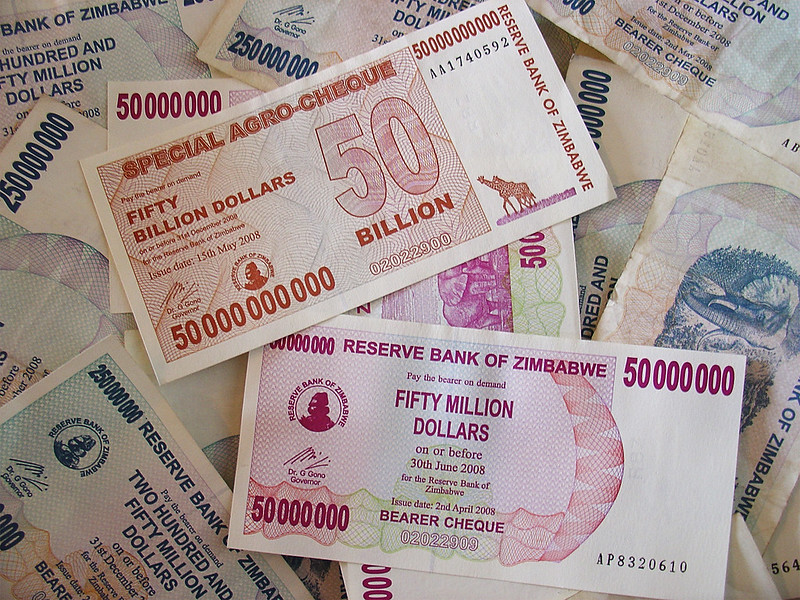Zimbabwe’s New Currency: A New Start?
 Zimbabwe is a country in Southern Africa that has faced a volatile economy and high poverty and unemployment rates in the last decades. Amid surging inflation, which reached 55% in March 2024, the government announced the creation of a new currency, the ZiG, indexed on market prices and backed by gold. The hope is that this new currency could stabilize the economy and restore market confidence. Zimbabwe’s new currency and poverty situation are now closely interlinked.
Zimbabwe is a country in Southern Africa that has faced a volatile economy and high poverty and unemployment rates in the last decades. Amid surging inflation, which reached 55% in March 2024, the government announced the creation of a new currency, the ZiG, indexed on market prices and backed by gold. The hope is that this new currency could stabilize the economy and restore market confidence. Zimbabwe’s new currency and poverty situation are now closely interlinked.
Zimbabwe’s Economic Situation
The 2023 elections, which saw President Emmerson Mnangagwa get reelected, largely happened under the sign of economic concerns plaguing the country. The foregone rule of Mugabe left the country in dire financial circumstances. Among other problems, high inflation, corruption and a suspension of aid from the World Bank and the International Monetary Fund (IMF) as part of sanctions have yielded a cutthroat economic situation.
Although real gross domestic growth (GDP) reached 5.5% in 2023, this number is expected to fall to 3.3% in 2024 due to the effects of an El Nino induced drought and the general macroeconomic instability. However, the country’s economic foundations are considered decent as several sectors, such as agriculture and mineral production, remain locally and globally competitive. Yet, structural economic challenges will have to be tackled head-on to fulfill Zimbabwe’s economic potential truly.
Zimbabwe and Poverty
The decades of economic instability have stunted the country’s ability to fight poverty. As of 2023, it’s estimated that 42% of the population still lives in extreme poverty, with a quarter of the population being food insecure. With certain economists claiming the country’s unemployment rate is as high as 85%, much of the burden for the slow progress in diminishing poverty rates falls upon the country’s economic situation.
Zimbabwe’s New Currency and Poverty
Finance Minister Ncube announced the creation of the ZiG (Zim Gold) as part of a series of measures that sought to restore economic stability to the country. Since its election, the government has increased taxes on products such as sugar to repay some of the debt that has caused much of the country’s structural problems.
The new currency, indexed on the country’s gold reserves and precious minerals, would be less volatile than its predecessor. Indeed, backed by hard value items, this would prevent the currency from losing its worth. If successful, the new currency could help restore the country’s economy, where currently 85% of transactions are recorded in the United States (U.S. dollars). The government’s main objective is to regain strength and trust in a national currency as a path to leave the U.S. Dollar.
Suffering from high exchange rates, confidence in a national currency could lend itself to a better overall context for small and private businesses if restored. Zimbabwe’s new currency and poverty both rely upon stability and forthcoming measures.
Looking Ahead
The currency debuted and Zimbabweans were asked to exchange their remaining Zimbabwean Dollars for the ZiG in early April. Since then, mixed reports have come out. The general mistrust of the population regarding the historically chaotic management of the country’s economic institution leads many to remain keen on prioritizing the U.S. Dollar in most exchanges.
However, the ZiG does stay at a much lower exchange rate than its predecessor, the U.S. dollar. The choice of backing up the currency with hard assets still yields questions as economists wonder if the country’s gold and mineral reserves are large enough to back a currency. Whether this new approach will bear its fruits for Zimbabwe’s new currency and poverty alleviation requires close monitoring in the future.
– Felix Stephens
Felix is based in London, UK and focuses on Business and Politics for The Borgen Project.
Photo: Flickr
